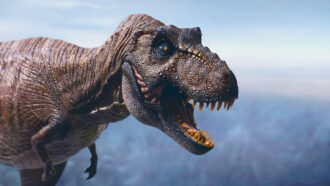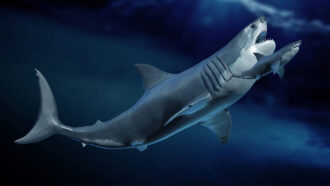
Animals
What is a dinosaur?
Scientists have named more than 1,000 species of nonavian dinosaurs. Their legacy lives on in the 11,000-plus bird species alive today.
Come explore with us!

Scientists have named more than 1,000 species of nonavian dinosaurs. Their legacy lives on in the 11,000-plus bird species alive today.

Since the discovery of Lucy's skeleton in 1974, a catchy name and ongoing scientific debates have kept this human ancestor in the spotlight.

Only around 80 fossil Tyrannosaurus rex skeletons have been found. They probably don’t include the biggest T. rex that ever lived.

The last woolly mammoth herd experienced a drop in genetic variation. But this is likely not what doomed these majestic beasts to extinction, new data suggest.

Well-preserved fossils from Morocco help reveal the weird way trilobites ate and perhaps why these iconic animals went extinct.

A debate rages over how to count brain cells in dinosaurs. At issue: figuring out how these extinct animals’ likely behaved.

Anne Kort uses computers to piece together the fossils of ancient mammals. Studying fossils virtually offers her more ways to study fragile remains.

In public view, scientists at the Denver Museum of Nature and Science will prepare the fossil for display. Their work will take about a year.

The extinct megalodon (Otodus megalodon) was the largest shark to ever prowl the oceans.

Microscopic fossils from Australia suggest that some bacteria evolved structures for oxygen-producing photosynthesis by 1.78 billion years ago.